How to clean gutters - easy ways to keep your gutters free from leaves and debris all winter long
Prevent leaks and unwanted maintenance costs with this handy guide

As autumn rears its head with its wet weather and falling leaves, there’s never been a better time to learn how to clean gutters. But while they’re an essential addition to your home, we know that cleaning guttering can be a chore.
Yes, although gutters work hard to protect your home from damp, their awkward placement and soggy insides make cleaning the gutters a job that many people put to the bottom of their to-do list. It’s vital that you don’t ignore this part of your house, though. Clogged or broken guttering can have disastrous consequences on your home and even invalidate your house insurance.
If you’re not sure where to start, though, we’ve put together a handy guide that explains everything you could possibly need to know about cleaning gutters. From a step-by-step guide to FAQs and the best gutter cleaning tools, we’ve got you covered.
How to clean gutters

Usually, we barely notice they are there, but gutters are a very important element of our homes. Gutters catch rainwater and prevent water damage such as mould, mildew, damp, water ingress, and even flooding occurring inside and outside your homes. But in order for them to do their job, gutters need to be cleaned regularly.
What you’ll need
- Ladder
- Bucket or garden waste bag
- Tool for scooping: this can be a specialised tool, a garden trowel or a plastic milk bottle with the base cut off as a scoop will also do the job.
- Heavy duty gloves
- Groundsheet or tarpaulin
- A garden hose or pressure washer (optional)
- Wet/dry vacuum cleaner (optional)
- Leaf blower (optional)
Step-by-step
1. Prepare the area
Before you get started with how to clean gutters, be aware that it can be a messy and dirty job so old clothes should be worn. Dress for the job by wearing long sleeves and heavy-duty gardening gloves. Rubber gloves will suffice if you know there are only light leaves to clear.
Place a sheet underneath the workspace to collect falling gunk and protect lawns and driveways. As most gutter pipes are installed above eye level, make sure you have a robust, extendable ladder.
Place the ladder base on a flat, sturdy surface. Secure with an anchor point and use ladder mats under the feet of the ladder. A ladder stabiliser will also support balance. Or enlist a family member to hold the ladder, only as a last resort.
Sign up to our newsletter for style inspiration, real homes, project and garden advice and shopping know-how
‘Consider investing in a ladder strap to avoid accidents,' advises Thomas Goodman from Myjobquote.co.uk. A ladder strap can be attached to a sturdy area of the building via hooks and straps to keep the ladder completely still while in use. However, it’s always necessary to have a second person there regardless in case of falls.'
2. Clear and prevent blockages
Using your tools, scrape out the gunk and blockages into the bucket, being careful not to damage the gutter pipes.
‘Use a bag or a bucket as a method of collecting the debris from the gutter,' advises Thomas from Myjobquote.co.uk. 'Use a ladder hook, rope, or any other preferred method, to hang the bag or bucket leaving you both hands-free to steady yourself and remove debris and leaves.’
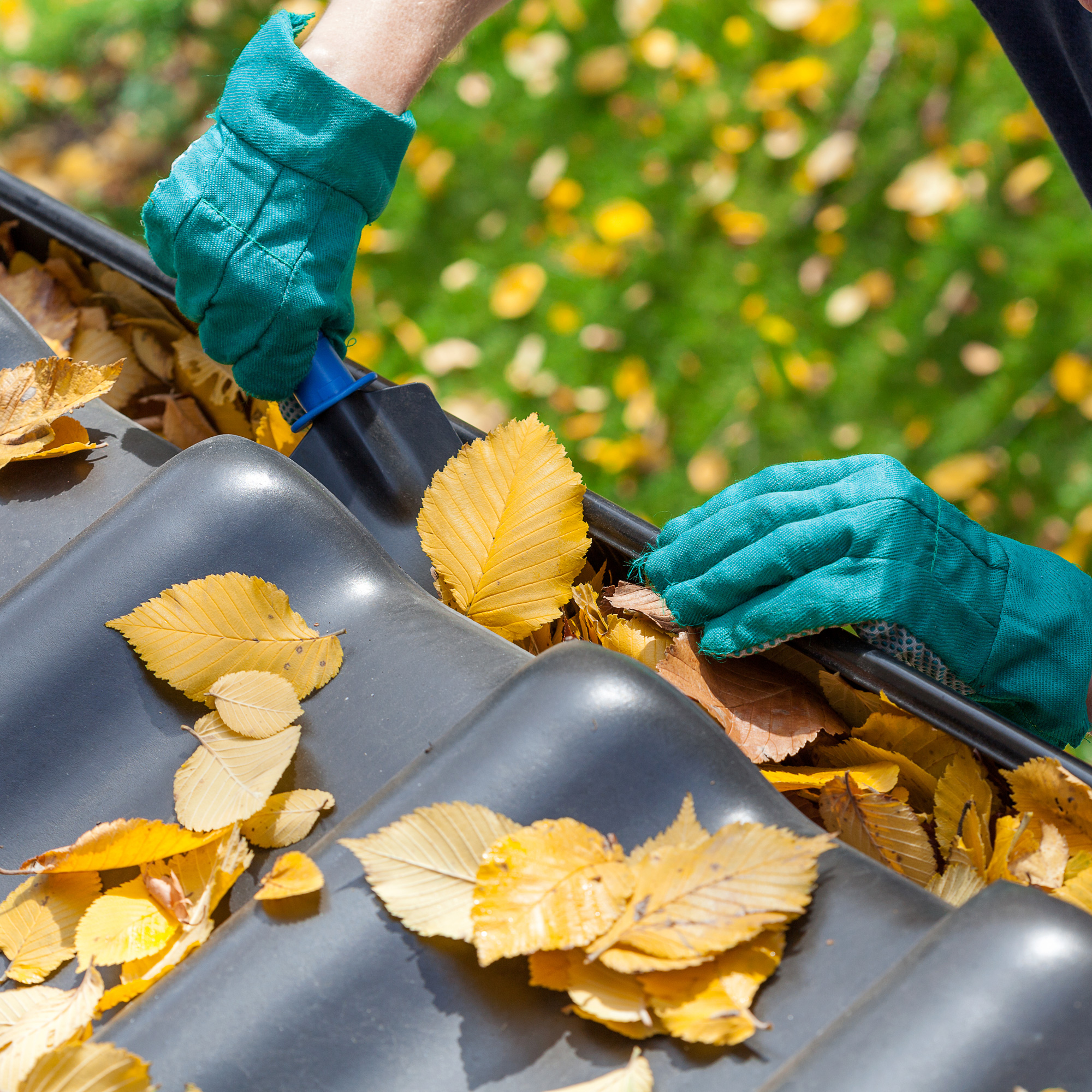
3. Focus on hopper heads
The next step with how to clean gutters is to focus your attention on the hopper heads. These sit at the top drainpipe.
They work as a funnel to increase water flow during periods of heavy rainfall and can easily become clogged.
4. Assess downpipes
If you think your downward pipe has a blockage, use a hose with high pressure to try and move the blockage. If this doesn’t work, use a long stick which you can push it down with.
If the downpipe is still blocked, cover the drain, stick the garden hose up the pipe and turn the water on. Failing that, use drain rods to push the blockage down from the top.
Once the downpipe is clear, run water from the hose along the horizontal pipe-work to clear any remaining debris. Then, collect bulky waste in a bucket at the bottom of the downpipe.
5. Check the stop ends
These stop rainwater from running straight off the end of a length of guttering. Tighten or replace any that are missing (measure the dimensions and profile first).
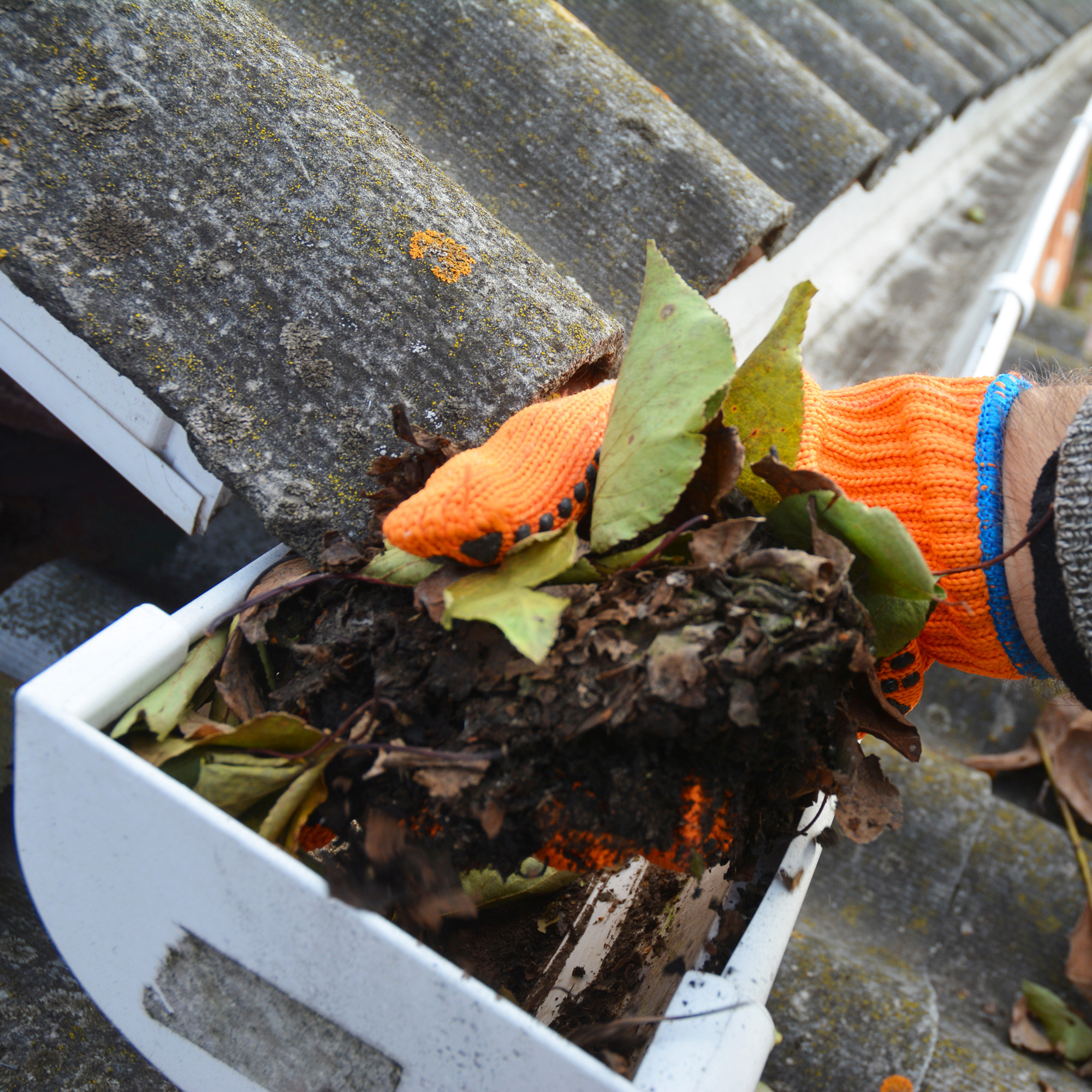
6. Fix loose downpipes
'If any of your guttering is loose, it is important that this is fixed back on securely to the building,' advise the experts at Gardening Express. 'Strong winds or heavy rain could cause it to come off, which would cause more problems and expensive repair costs.'
Check for missing bolts from the clips, replace them, and see if the wall plugs have worked loose. Replace them if so.
7. Fix leaky joints
'Leaks are often common along horizontal pieces of guttering, or the joints which can receive a lot of pressure during a heavy rainfall,' says the spokesperson for Gardening Express.
'If you do notice any leaky pieces of guttering, reach for some repair tape, which should help stop the problem. If it is a bigger problem, you may need to purchase a new piece of guttering.'
Clean the joint with a brush and wrap it with a length of repair tape that’s a few centimetres longer than the width of the downpipe. Press in place firmly with your palm to mould it around the shape of the joint.
Alternatively, use a screwdriver to dig out any old jointing material, clean the area with a brush, and then inject roof and gutter sealant around the pipe. Smooth it with a gloved finger for a neat finish.
8. Prevent sagging
A loose or wrongly positioned bracket will cause guttering to sag, so that water pools rather than flows away. Tighten or replace loose or missing screws, or fit extra brackets to support it.
'If you have started to notice parts of your guttering sag, it will probably be due to excess water being able to sit in the pipe,' note the experts at Gardening Express. 'You will need to purchase some brackets and add these onto the guttering to help with the downward tilt which will ensure the water can flow away.'
Of course, it may be the case that the sagging just can't be fixed. In that case, it's probably a good idea to read up on how much it costs to replace gutters around a house.
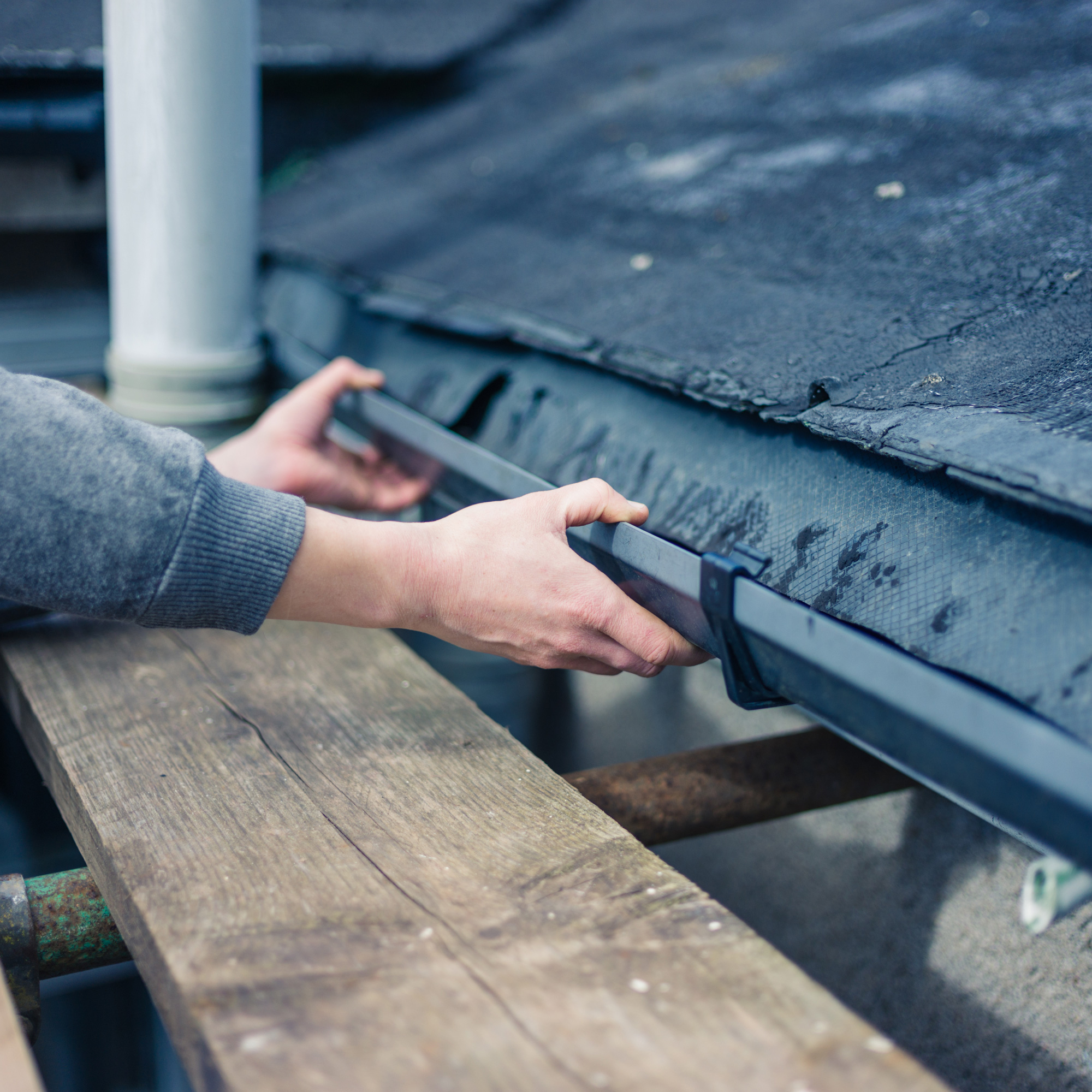
How to clean cast-iron guttering
'Guttering comes mainly in two types, plastic and cast iron' explains a spokesperson for Gardening Express.
'With the latter tending to be found on older buildings. If you do have cast iron guttering, you may need to perform some more checks on the guttering, such as removing any rust which may have developed.'
For starters, you need to fix and secure the cast-iron guttering, which is often joined together with bolts. Undo these with a spanner and loosen the joint, tapping away the old putty or mastic.
Clean with a wire brush. Run a bead of sealant into the joint, press the guttering into the sealant and fit a new bolt. Then, smooth with a gloved finger.
To treat the rust on cast-iron guttering, use an emery cloth to rub away small patches, or use a wire brush for larger areas. Fill any small holes with roof and gutter sealant. Paint with a rust-preventing metal primer and then with gloss paint.
Why you should clean your gutters
Like any building component, rain guttering needs to be regularly maintained to do its job. If overlooked, the pipework can soon become clogged with leaves, sticks, decaying debris and even animals nesting.
Looking after your gutters means you’ll be preventing all kinds of potential problems, including wet walls and water ingress, into your home.
'Fallen autumn leaves can cause a lot of problems for your guttering,' warns a spokesperson for Gardening Express. 'If there’s a build-up, it can cause a blockage in the guttering, which stops the excess water from being able to flow smoothly, causing spillages and drips from outside the guttering.'
If not cleared, come winter, ice-filled gutters can become so heavy they detach from the roof altogether, creating a huge repair and replacement job which will cost time and money.
'If you do not feel confident learning how to clean gutters yourself, any professional roofing tradesperson can do this job for you,' says Joe Lockhart of Lockhart Roofing and Brickwork Services.
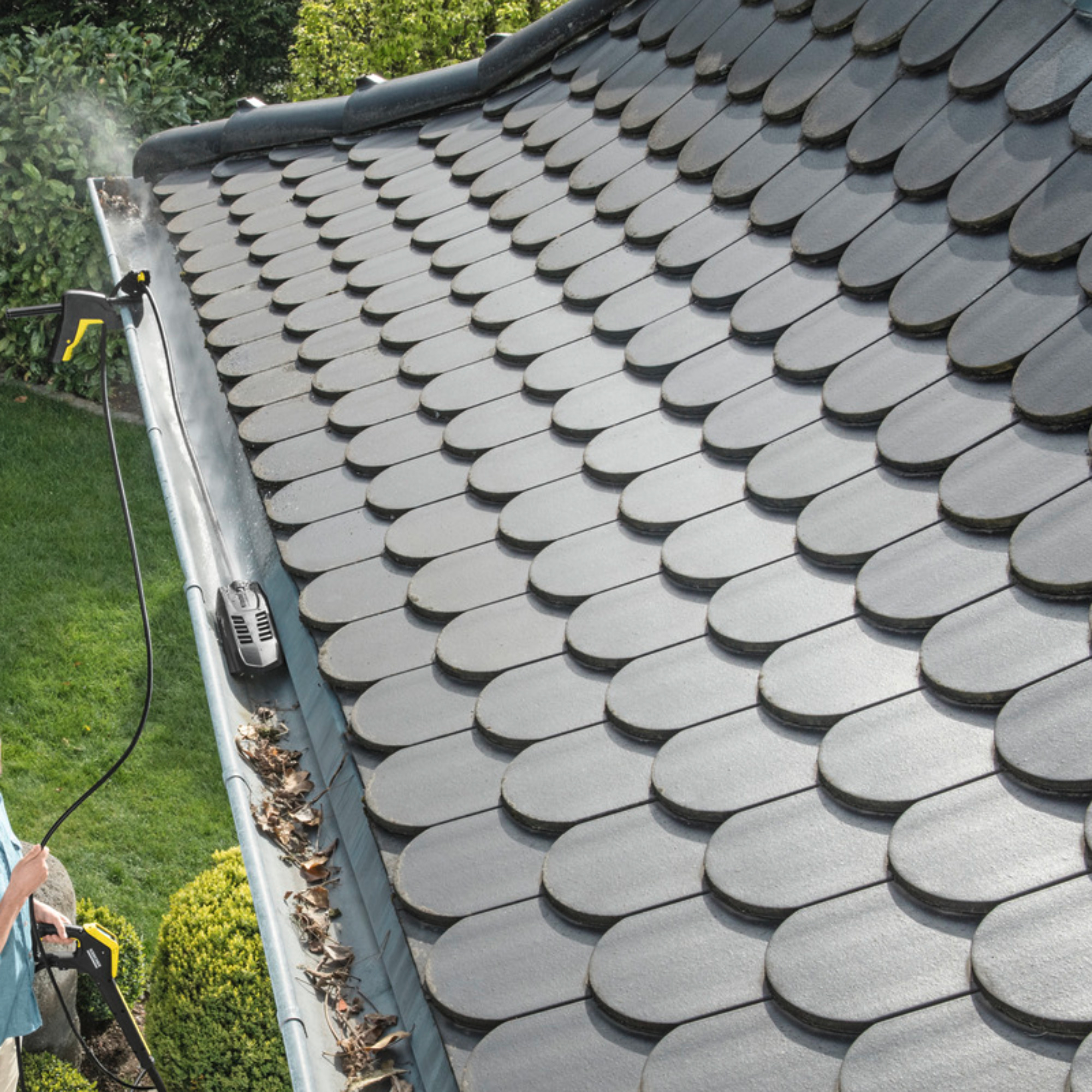
'A professional tradesperson who cleans gutters usually has access to a leaf blower – this makes life easier when cleaning out gutters,' says Joe from Lockhart Roofing and Brickwork Services. 'However, anyone can learn how to clean gutters.'
'Gutter cleaning is one of the easier jobs that you can do as a homeowner, so I would recommend giving it a go and learning how to do it, as it can help to save costs, which will be helpful over the coming months.'
A spokesperson for Gardening Express agrees, 'Cleaning gutters yourself is the easiest way to clean gutters. Checks should carried out to prevent any expensive damages which could easily have been avoided.
All you need is a set of ladders, a pair of gloves and a nice day to do a thorough check of your guttering before winter arrives.'
How to prevent clogged guttering
As gutters are constantly exposed to the elements, they’re always going to need general maintenance. But if you want to prevent clogged gutters, there are specialist products available - including gutter guards.
There are a few different types of gutter guards out there, including strips of wire mesh that you place on top of your gutters to stop leaves and pests from building up inside gutters and bristle brush guards.
'Easy-to-fit gutter protectors are manufactured from a rigid nylon brush. “Bristles” repel falling leaves and moss whilst allowing the water to flow freely to the downpipe,' says Daniel Martin from Coopers of Stortford.
'With a hook at either end, they are easily joined together to form a continuous run along the entire length of the gutter, or they can be cut to length.'
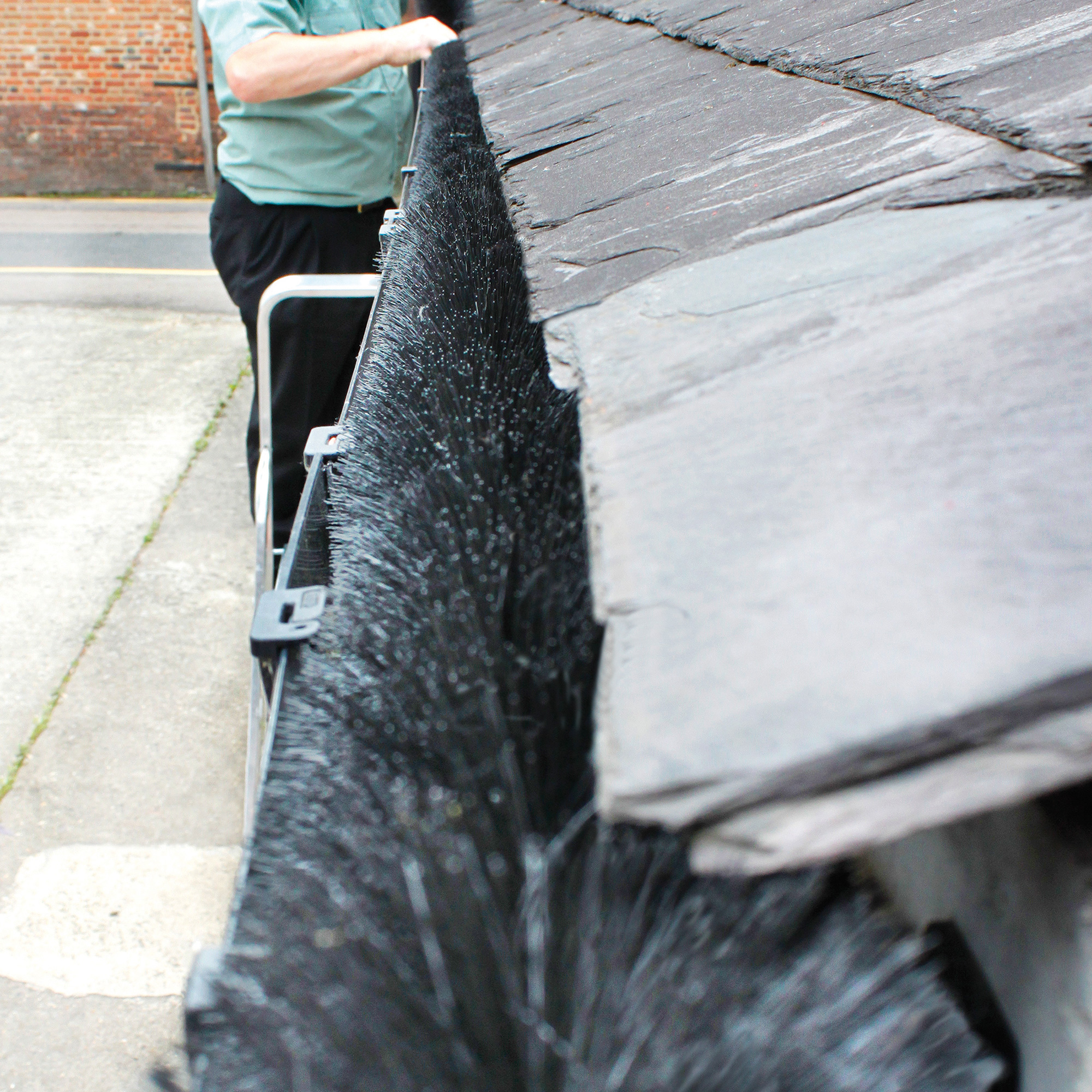
FAQs
When's the best time to clean my gutters?
The obvious time to clean gutters is after heavy leaf fall at the end of autumn and just before a winter freeze sets in.
'The best time to clean your gutters is just before winter when there is a lot of debris and leaves to clear away from autumn,' advises Joe from Lockhart Roofing and Brickwork Services.
However, a spring clean is also advisable to ensure there have been no blockages or frost damage during winter.
'A full clean is best done at the beginning of spring and end of autumn, and this is easily achieved with a WOLF-Garten multi-change® Gutter Cleaner tool,' explains Mark Hewett Divisional Sales Manager at WOLF-Garten.
'The leaf scoop can quickly remove leaves and debris, while the gutter brush removes stubborn dirt and leaves'.
How often should I clean gutters?
To avoid any expensive fixes down the line it's important to check guttering every year.
'I would recommend cleaning your gutters at least once a year to prevent blockages which can lead to drainage problems during the rainier months,' advises Joe from Lockhart Roofing and Brickwork Services.
Performing an annual guttering check involves ensuring they are structurally sound and able to do their job, especially before any potential snow storms or heavy rainfalls are forecast.
'This is one of the easier jobs that you can do as a homeowner, so I would recommend giving it a go and learning how to do it, as it can help to save costs which will be helpful over the coming months,' continues Joe. ‘If you do not feel confident doing it yourself, however, any professional roofing tradesperson can do this job for you.'

How do you clean guttering without a ladder?
If you don’t wish to face your fear of heights, you can always learn how to clean gutters from the ground. One method is the use of a high-pressure water jet, however, this can be very messy.
'If you’re wishing to clean your gutter from the ground we recommend getting your hands on a specialist gutter hoover,' says Thomas from myjobquote.co.uk. 'They work perfectly for easy cleaning jobs.'
Cleaning gutters from the ground is by far the safest option. Although it may take a little longer it can be just as effective using handy attachments.
'A roof gutter and pipe cleaning kit is a clever solution for cleaning gutters and blocked pipes or outflows! Ours attaches to your pressure washer and works all by itself,' explains Harry Turner, Product Manager, Karcher. 'The high pressure of the jets moves the hose smoothly through the pipe and gutter.'
'This is handy, as it means you can operate it from the ground, and don’t have to climb up a ladder, constantly moving it along as you go.’
'However, if your gutter blockage is on the more complex side it would be best to take a more hands-on approach or invest in the skills of a professional rather than deal with how to clean gutters yourself,' adds Thomas from myjobquote.co.uk.
Is it safe to clean gutters by yourself?
Yes, it is safe to clean gutters by yourself, but this answer is conditional. ‘Cleaning gutters is a task many homeowners consider undertaking themselves, but it's crucial to recognise the potential risks involved,’ explains Interior Designer and CEO of Meble Furniture, Raf Michalowski.
‘If you have mobility issues, balance problems, or other health concerns, it might not be safe for you to climb a ladder and clean gutters. In such cases, hiring a professional is advisable,’ he continues.
It’s also important to take into account weather conditions, the tools you have at hand, and your knowledge of guttering as a whole. If you don’t feel confident that you can safely and successfully clean your gutters, it’s probably a better idea to seek the help of a professional.
What if there is an animal in my gutter?
Birds and rodents hunkering down in the cosy warm gutters are commonplace. The best option is to deter them from setting up a home in the first place by adding mesh or gutter protectors.
Cleaning your gutters regularly should disturb and deter pests from returning. That being said, contact a pest control specialist if there is a particularly large colony or insect nest that may cause harm to guttering or humans.
According to the RSPB website, all birds, their nests and eggs in the UK are protected by the Wildlife & Countryside Act 1981, and thus it is an offence to damage or destroy an active nest.
You will need to wait until the birds have abandoned the nest before it can be removed.
There are exceptions if it can be proved removing certain breeds was necessary for preserving public health.
Just remember that cleaning your gutters should be a regular task, so make sure you add it to your cleaning calender so you're not caught out.
Tamara was Ideal Home's Digital Editor before joining the Woman & Home team in 2022. She has spent the last 15 years working with the style teams at Country Homes & Interiors and Ideal Home, both now at Future PLC. It’s with these award wining interiors teams that she's honed her skills and passion for shopping, styling and writing. Tamara is always ahead of the curve when it comes to interiors trends – and is great at seeking out designer dupes on the high street.
- Rachel HomerContributor
- Lauren BradburyContent Editor (House Manual)